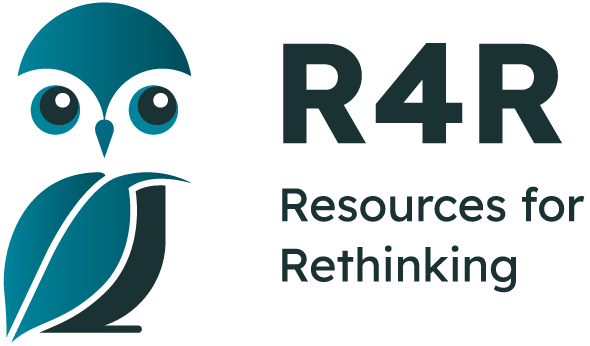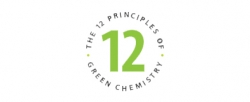- Home
- Tutorial
- Resource Guides
- Focus Areas
- LSF Programs
-
Professional
Development - Review Process
-
A project of LSF

Search for Resources
Description
This green chemistry resource places students in the role of 'materials scientists' tasked with creating an environmentally-friendly shampoo. Green Chemistry stresses the use of safe, energy efficient, non-toxic products and processes as a practical way to solve environmental problems. The shampoo challenge involves several steps which include creating an appropriate shampoo base, altering pH, making a basic soap, analyzing solvents, and studying the toxicology of sodium lauryl sulfate.
Environmental impacts are also considered in packaging, distribution, and waste production. Students apply basic chemistry concepts in the lessons and labs which help strengthen the understanding and real life connections associated with the 12 Principles of Green Chemistry.
The varied activities can be used in a progression or as stand- alone lessons to address middle level chemistry outcomes and increase awareness of sustainability issues through hands-on experiences. Lesson activities include:
Writing the Principles(1X60min): In this lab activity students create glue and evaluate the process to deduce the 12 principles of Green Chemistry.
12 Principle Match Up (1X60min): Students manipulate simplified versions of the 12 Principles and make real life connections.
Bingo with Greg (1X60min): Students play Bingo to strengthen their understanding of the definitions and life connections associated with each principle.
The Story of Cosmetics Assessment (1X60min): After watching a video describing how cosmetics are made and regulated, students discuss the distinctions among fact, opinion, and bias. They are also inspired to be more informed consumers.
It Is Easy Being Green(1X60min): Students are introduced to the green chemistry 'shampoo challenge' by participating in a “Game Show” activity.
Cookie Equations (1X60min): Students use cookies to help them to understand that chemical equations must be balanced, by manipulating “elements” to form “compounds”.
The Heat is On (1X60min): In this lab activity students use sodium hydroxide to create the base used in their shampoos. They then observe an exothermic reaction, measure the amount of heat, create a temperature-time graph and determine ambient temperature strategies to use in the lab.
pH Neutral(1X60min): In this lab activity students observe, measure, and record what happens as a varying amount of acidic solution is added to a basic shampoo to obtain neutralization, with a goal of creating a pH-balanced shampoo.
Solvent Snapshot(2X60min): Using International Safety cards students analyze a variety of potential solvents they for use in the shampoo-making process.
Shampoozled(1X60min): In this lab activity students create a basic soap while maintaining a set temperature range.
Shampoozled 2(1X60min): In this lab activity students try to create a pH-balanced shampoo with green emulsifiers.
In a Lather(1X60min): In this lab activity students test different variables to see if they impact the effectiveness of the shampoo. “Does the lather matter?”
SLS Today(1X60min): After viewing a Today Show segment, students evaluate the safety of sodium lauryl sulfate in shampoo and complete a toxicity analysis.
PPM(1X60min): Students practice standard serial dilution to better understand parts per million.
SLS Toxicology(2X60min): In this lab activity students use lettuce seeds to determine the toxicology of sodium lauryl sulfate.
Breaking the Tension(1X60min): In this lab activity, students observe the effect of surface tension in water and the dispersive force of detergents to understand how shampoos work.
Product Test(1X60min): In this lab activity students conduct an experiment to determine if the shampoo they have created is effective in cleaning hair.
E-factor(1X60min): In this activity students manipulate M&Ms to calculate E-factor and relate it to chemistry production.
In Your Bathroom(1X60min): Students collect data on ingredients found in products they use at home and investigate the substances used to make these products.
Puzzler(1X60min): Students create puzzles analyzing their research on renewable and non- renewable packaging materials.
Packed Up Properties(2X60min): In this lab activity students use the properties of matter and the 12 principles of Green Chemistry to test various packaging materials and determine the most green and effective choice for their shampoo.
Water Waste(2X60min): In this lab activity students test various waste streams likely to come from household products and evaluate the environmental impacts of those wastes.
The Green Zine(2X60min): In this culminating activity the students create a magazine, web page, and an art campaign to analyze their use of the 12 Principles of Green Chemistry and to promote their implementation.
General Assessment
What skills does this resource explicitly teach?
- Using tools and apparatus to conduct investigations
- Interpreting patterns and trends in data
- Analyzing results
- Evaluating processes used in planning, problem solving, and completing a task
- Critical thinking strategies
- Responding and reflecting on written text
- Detecting bias
Strengths
- An up-to-date, interesting resource
- Contains real world applications of Green Chemistry
- Bingo games and game show spoofs are fun ways to reinforce and introduce concepts
- Has well-designed graphic organizers and brainstorming charts
- Students use critical thinking skills to analyze video and identify facts, opinions, and bias.
- Excellent background information for both teachers and students
- Lessons are well-presented and easy to use with the objective of each lesson clearly stated, and all worksheets and handouts provided
- Resource contains a teachers guide, useful Power Points and a curriculum mapping document
Weaknesses
- Needs to be more opportunities for students to identify, clarify, and express their values
- Few accommodations suggested for struggling learners
- Aboriginal perspectives are not included
- An action plan should be fully developed
Recommendation of how and where to use it
This resource could be used in middle science classes and introductory chemistry classes to meet outcomes addressing atoms and compounds, nomenclature, acidic and basic solutions, and exothermic change. It could also be used as an environmental chemistry enrichment unit connecting introductory chemistry concepts with real world impacts and the question of sustainable practices.
Relevant Curriculum Units
The following tool will allow you to explore the relevant curriculum matches for this resource. To start, select a province listed below.
- Step 1Select a province
- Alberta
- Step 2Select a grade level
- Grade 9
- Step 3Select a subject
- Science
- Step 4Relevant matches
- Environmental Chemistry
- Knowledge and Employability Science: Environmental Chemistry (Social and Environmental Contexts Emphasis)
- Knowledge and Employability Science: Matter and Chemical Change (Nature of Science Emphasis
- Matter and Chemical Change
- Grade 10
- Step 3Select a subject
- Science
- Step 4Relevant matches
- Science 10-4 (Knowledge and Employability Science):Investigating Properties of Matter
- Science 14: Investigating Properties of Matter
- British Columbia
- Manitoba
- Step 2Select a grade level
- Grade 7
- Step 3Select a subject
- Science
- Step 4Relevant matches
- Matter
- Particle Theory of Matter
- Grade 9
- Step 3Select a subject
- Science
- Step 4Relevant matches
- Senior 1 Science: Atoms and Elements
- Grade 10
- Step 3Select a subject
- Science
- Step 4Relevant matches
- Senior 2 Science: Chemistry in Action
- New Brunswick
- Newfoundland & Labrador
- Northwest Territories
- Nova Scotia
- Step 2Select a grade level
- Grade 7
- Step 3Select a subject
- Science
- Step 4Relevant matches
- Science 7: Environmental Action
- Grade 9
- Step 3Select a subject
- Science
- Step 4Relevant matches
- Science 9: Atoms and Elements
- Grade 10
- Step 3Select a subject
- Science
- Step 4Relevant matches
- Science 10:Chemical Reactions
- Nunavut
- Step 2Select a grade level
- Grade 9
- Step 3Select a subject
- Science
- Step 4Relevant matches
- Chemistry and the Environment
- Knowledge and Employability Science: Environmental Chemistry (Social and Environmental Contexts Emphasis)
- Knowledge and Employability Science: Matter and Chemical Change (Nature of Science Emphasis
- Matter and Chemical Change
- Grade 10
- Step 3Select a subject
- Science
- Step 4Relevant matches
- Investigating Properties of Matter
- Science 10-4 (Knowledge and Employability Science):Investigating Properties of Matter
- Science 14
- Ontario
- Step 2Select a grade level
- Grade 7
- Step 3Select a subject
- Science & Technology
- Step 4Relevant matches
- Matter and Energy: Pure Substances & Mixtures
- Grade 9
- Step 3Select a subject
- Science
- Step 4Relevant matches
- Chemistry: The Nature of Matter
- Grade 10
- Step 3Select a subject
- Science
- Step 4Relevant matches
- Science (Academic):Chemistry: Chemical Reactions
- Science (Applied)::Chemistry: Chemical Reactions and Their Practical Applications
- Prince Edward Island
- Step 2Select a grade level
- Grade 7
- Step 3Select a subject
- Science
- Step 4Relevant matches
- Mixtures and Solutions
- Grade 9
- Step 3Select a subject
- Science
- Step 4Relevant matches
- Science 9: Content Knowledge
- Science 9: Decisions and Perspectives
- Grade 10
- Step 3Select a subject
- Science
- Step 4Relevant matches
- Science 421A: Content Knowledge
- Sciene 431A: Chemical Reactions
- Quebec
- Step 2Select a grade level
- Grade 10
- Step 3Select a subject
- Science & Technology
- Step 4Relevant matches
- Environmental Science & Technology: The Material World
- Science & Technology: The Material World
- Science and the Environment: The Material World
- Saskatchewan
- Step 2Select a grade level
- Grade 7
- Step 3Select a subject
- Science
- Step 4Relevant matches
- Science 7: Physical Science: Mixtures and Solutions
- Grade 9
- Step 3Select a subject
- Science
- Step 4Relevant matches
- Science 9: Physical Science: Atoms and Elements
- Grade 10
- Step 3Select a subject
- Science
- Step 4Relevant matches
- Science 10: Chemical Reactions
- Yukon Territory
Themes Addressed
Citizenship (1)
- Ecological Footprint
Human Health & Environment (1)
- Environmental Contaminants & Health Hazards
Science and Technology (2)
- Alternative Ways of Doing Science
- Analysing Conventional Science
Waste Management (5)
- Cradle-to-Cradle
- Hazardous Waste
- Liquid Waste
- Rethink, Reduce, Reuse, Recycle
- Source Reduction
Sustainability Education Principles
| Principle | Rating | Explanation |
|---|---|---|
| Consideration of Alternative Perspectives | Satisfactory | Different points of view are presented through guided inquiry, video clips, and background information. The Story of Cosmetics Assessment specifically asks the student to to identify fact and opinion in the video and to investigate biased. |
Consideration of Alternative Perspectives:
| ||
| Multiple Dimensions of Problems & Solutions | Good | Students are asked to consider the environment, economics and human well being in the production and use of everyday products. |
| Multiple Dimensions of Problems & Solutions: Effectively addresses the environmental, economic and social dimensions of the issue(s) being explored.
| ||
| Respects Complexity | Satisfactory | Although not examining all aspects of this issue, it promotes discussion and action through hands-on learning activities, games, and project work. |
| Respects Complexity: The complexity of the problems/issues being discussed is respected. | ||
| Acting on Learning | Satisfactory | Although a structured community project is not included, the students are taking positive action by creating a green product using lab procedures with a lower environmental impact. |
| Acting on Learning: Learning moves from understanding issues to working towards positive change — in personal lifestyle, in school, in the community, or for the planet
| ||
| Values Education | Satisfactory | |
| Values Education: Students are explicitly provided with opportunities to identify, clarify and express their own beliefs/values. | ||
| Empathy & Respect for Humans | Satisfactory | |
| Empathy & Respect for Humans: Empathy and respect are fostered for diverse groups of humans (including different genders, ethnic groups, sexual preferences, etc.). | ||
| Personal Affinity with Earth | Good | Although not explicitly stated in the materials, Green Chemistry is about creating safe, energy efficient and non-toxic products- a process that will benefit all creatures. |
| Personal Affinity with Earth: Encourages a personal affinity with -the natural world.
| ||
| Locally-Focused Learning | Good | The environmentally-friendly production of an everyday product (shampoo) and the personal care product home inventory assignment will bring relevance to the lives of the students. |
| Locally-Focused Learning: Includes learning experiences that take advantage of issues/elements within the local community.
| ||
| Past, Present & Future | Satisfactory | Present day situations are evaluated and students are asked to play a role in implementing solutions for a more sustainable future. |
| Past, Present & Future: Promotes an understanding of the past, a sense of the present, and a positive vision for the future. | ||
Pedagogical Approaches
| Principle | Rating | Explanation |
|---|---|---|
| Open-Ended Instruction | Good | A combination of structured and guided inquiry is used. Students are able to discover some answers on their own and are encouraged to make more environmentally friendly choices in the use of everyday personal care products. |
| Open-Ended Instruction
: Lessons are structured so that multiple/complex answers are possible; students are not steered toward one 'right' answer. | ||
| Integrated Learning | Satisfactory | Although primarily a chemistry resource, there are opportunities for addressing outcomes in language arts, art, technology and mathematics. |
| Integrated Learning: Learning brings together content and skills from more than one subject area
| ||
| Inquiry Learning | Good | |
| Inquiry Learning: Learning is directed by questions, problems, or challenges that students work to address.
| ||
| Differentiated Instruction | Satisfactory | The resource teaches to both the cognitive and affective domains. There are some accommodations suggested for students with learning difficulties with regards to differentiated reading level cards in the Solvent Slapshot activity. A variety of teaching methods are used including discussing and reflecting on case studies, hands-on, experiential learning, Power Point & video presentations, and games. |
| Differentiated Instruction: Activities address a range of student learning styles, abilities and readiness.
| ||
| Experiential Learning | Very Good | Hands on, minds-on learning is prominent. |
| Experiential Learning: Authentic learning experiences are provided
| ||
| Cooperative Learning | Satisfactory | The Solvent Slapshot lesson has a cooperative learning jigsaw activity. |
| Cooperative Learning: Group and cooperative learning strategies are a priority.
| ||
| Assessment & Evaluation | Satisfactory | Some assessment tools are provided, including reflection questions. There are also rubrics for evaluating project work |
| Assessment & Evaluation: Tools are provided that help students and teachers to capture formative and summative information about students' learning and performance. These tools may include reflection questions, checklists, rubrics, etc. | ||
| Peer Teaching | Satisfactory | |
| Peer Teaching: Provides opportunities for students to actively present their knowledge and skills to peers and/or act as teachers and mentors.
| ||
| Case Studies | Satisfactory | Case studies are included, but are they are not thorough. These include a reading on the Bhopal disaster, the video clip on "The Story of Cosmetics", and a Today Show segment on the use of sodium lauryl suphate. |
| Case Studies: Relevant case studies are included. Case studies are thorough descriptions of real events from real situations that students use to explore concepts in an authentic context. | ||
| Locus of Control | Satisfactory | There are opportunities for students to delve deeper into chosen issues with support from supplementary resources. The culminating activity gives the students different options to pursue. |
| Locus of Control: Meaningful opportunities are provided for students to choose elements of program content, the medium in which they wish to work, and/or to go deeper into a chosen issue. | ||

